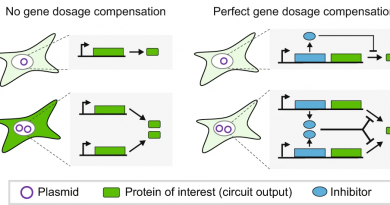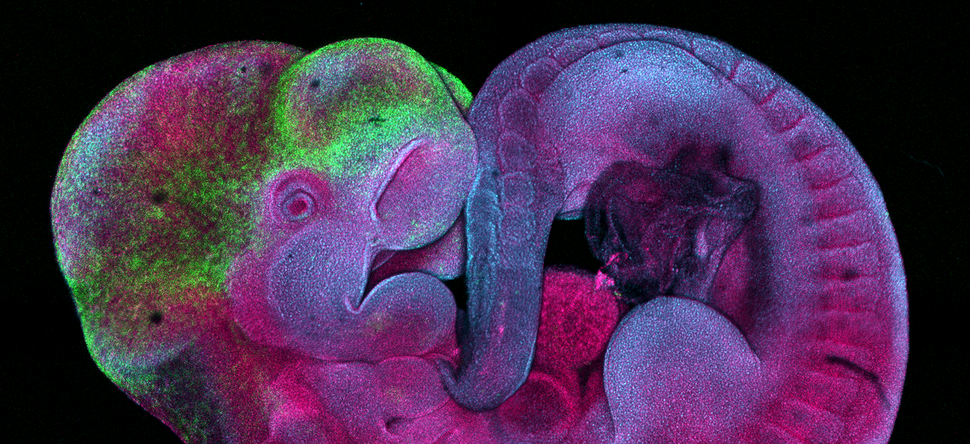How infrequent seizures may lead to persistent memory loss in Alzheimer’s disease
Even relatively infrequent seizures can lead to long-lasting cognitive deficits in animal models of Alzheimer’s disease; how this happens, however, has been difficult to explain.
In her lab at Baylor College of Medicine, Dr. Jeannie Chin, assistant professor of neuroscience, and her colleagues have uncovered a mechanism that offers an explanation to this puzzle.
We are focusing on the genetic changes that seizures might trigger in the memory center of the brain – the hippocampus – that could lead to loss of memory or other cognitive deficits,” Chin said.
Seizures, Alzheimer’s disease and memory

Experimental and clinical evidence suggest that seizures are part of Alzheimer’s disease. Convulsive seizures are common in patients who have a family history of the disease, especially in advanced cases. However, for most patients with Alzheimer’s the condition does not run in the family. In these patients who present with the sporadic form of the disease, convulsive seizures are typically absent.
Mouse models of Alzheimer’s have revealed that a different type of seizures, called non-convulsive or ‘silent seizures,’ can also occur. These abnormal electrical discharges with a seizure-like pattern occur in the deepest regions of the brain, such as the hippocampus, the memory center.
In 2017, research at Baylor College of Medicine and other institutions revealed that silent seizures also can occur in patients with Alzheimer’s. Dr. Jeffrey L. Noebels, professor of neurology, neuroscience, and molecular and human genetics and director of the Blue Bird Circle Developmental Neurogenetics Laboratory at Baylor College of Medicine and colleagues discovered that deep in the brains of two patients with Alzheimer’s disease the hippocampus displays episodic seizure-like electrical activity. These non-convulsive hippocampal seizures are the first signs of ‘silent’ brain electrical network dysfunction described in patients with Alzheimer’s disease, and although further studies are needed to determine whether this finding is common in this disease, the researchers speculate that silent seizures could lead to problems of memory.
Linking deltaFosB and calbindin to seizures and memory loss
Chin and colleagues investigated the molecular mechanisms mediating the connection between seizures and memory loss. They measured the levels of a number of proteins involved in memory and learning and found that levels of the protein deltaFosB strikingly increase in the hippocampus of Alzheimer’s disease mice that had seizures. DeltaFosB already is well known for its association with other neurological conditions linked to persistent brain activity of specific brain regions, such as addiction. In this study, the researchers found that after a seizure, the deltaFosB protein remains in the hippocampus for an unusually long time; its half-life – the time it takes for the amount of protein to decrease by half – is eight days. Most proteins have a half-life that is between hours and a day or two.
“Interestingly, because deltaFosB is a transcription factor, meaning that its job is to regulate the expression of other proteins, these findings led us to predict that the increased deltaFosB levels might be responsible for suppressing the production of proteins that are necessary for learning and memory,” Chin said. “In fact, we found that when the levels of deltaFosB increase, those of other proteins, such as calbindin, decrease. Calbindin also has been known for a long time to be involved in Alzheimer’s disease and epilepsy, but its mechanism of regulation was not known. We then hypothesized that deltaFosB might be regulating the production of calbindin.”
Further investigations supported the researchers’ hypothesis. The scientists showed that deltaFosB can bind to the gene calbindin suppressing the expression of the protein. When they either prevented deltaFosB activity or experimentally increased calbindin expression in the mice, calbindin levels were restored and the mice improved their memory.
And when researchers experimentally increased deltaFosB levels in normal mice, calbindin expression was suppressed and the animals’ memory deteriorated, demonstrating that deltaFosB and calbindin are key regulators of memory.

Connecting pieces of the puzzle
“Our findings have helped us answer the question of how even infrequent seizures can have such lasting detrimental effects on memory,” Chin said. “We found that seizures can increase the levels of deltaFosB in the hippocampus, which results in a decrease in the levels of calbindin, a regulator of memory processes. DeltaFosB has a relatively long half-life, therefore even when seizures are infrequent, deltaFosB remains in the hippocampus for weeks acting like a brake, reducing the production of calbindin and other proteins, and disrupting the consequent brain activity involved in memory. The regulation of gene expression far outlasts the actual seizure event that triggered it.”
The scientists found the same changes in deltaFosB and calbindin levels in the hippocampus of Alzheimer’s disease patients and in the temporal lobe of epilepsy patients.
However, they underscore that it is too soon to know whether regulating deltaFosB or calbindin could improve or prevent memory problems or other cognitive deficits in people with Alzheimer’s disease. However, “now that we know that the levels of deltaFosB and calbindin are effective markers of brain activity in the hippocampus and memory function, we propose that these markers could potentially help assess clinical therapies for Alzheimer’s and other diseases with seizures, such as epilepsy,” Chin said.
Find all the details of this study in the journal Nature Medicine.
Other contributors to this work include Jason C. You, Kavitha Muralidharan, Jin W. Park, Iraklis Petrof, Mark S. Pyfer, Brian F. Corbett, John J. LaFrancois, Yi Zheng, Xiaohong Zhang, Carrie A. Mohila, Daniel Yoshor, Robert A. Rissman, Eric J. Nestler and Helen E. Scharfman. The authors are affiliated with one or more of the following institutions: Baylor College of Medicine, Thomas Jefferson University, New York University School of Medicine, Texas Children’s Hospital, University of California San Diego School of Medicine, VA San Diego Healthcare System and Icahn School of Medicine at Mount Sinai.
This work was supported by the Margaret Q. Landenberger Research Foundation, the Hassel Family Foundation, and the National Institutes of Health Grants NS085171, F30-AG048710, NYS OMH, 193 AG051848, BX003040, AG0051839 and AG005131.



